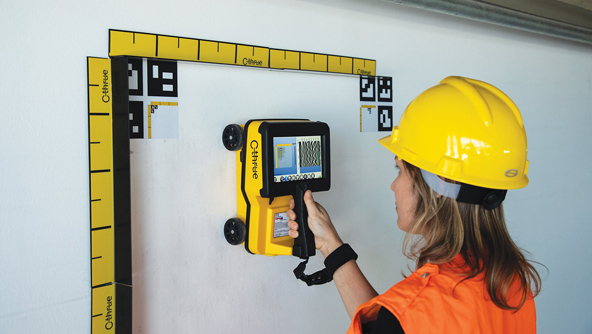Past the Surface Area: Leveraging Advanced Concrete Scanning Techniques for Unmatched Precision and Understanding
In the realm of building and construction and framework maintenance, the mission for precision and thoroughness is never-ending. Advanced concrete scanning methods have become vital tools in this quest, using a peek under the surface area to reveal a globe of crucial understandings. By taking advantage of sophisticated innovations, specialists can uncover anomalies, assess the condition of concrete structures, and make informed decisions that shape the program of tasks. The implications of these methods expand much past plain surface-level examinations, assuring a depth of precision and understanding that is unrivaled.
Importance of Advanced Concrete Scanning
The significance of using sophisticated concrete scanning strategies hinges on the unmatched precision they use for identifying sub-surface anomalies and making certain architectural honesty. By utilizing innovative technologies such as ground-penetrating radar (GPR), electromagnetic induction, and progressed sonar imaging, building professionals can delve beneath the surface area of concrete structures with a level of accuracy that far exceeds standard evaluation techniques. Concrete Scanning. These techniques make it possible for the identification of hidden threats like rebar rust, gaps, avenues, or post-tension cords that might compromise the security and safety and security of a framework gradually
Moreover, advanced concrete scanning gives important understandings into the total condition of a concrete element without the requirement for intrusive actions, decreasing the danger of causing damages during the analysis procedure. The ability to identify the specific location and depth of prospective concerns permits targeted repair services and upkeep, eventually extending the lifespan of the framework and enhancing its performance. Basically, the value of advanced concrete scanning can not be overemphasized in the realm of construction and framework maintenance, where precision and dependability are paramount.
Kinds Of Cutting-Edge Technologies

Anomalies and Issue Detection

In enhancement to GPR, concrete scanning strategies like thermography and impact-echo testing are also effective in detecting abnormalities and defects. By leveraging these advanced strategies, professionals can proactively attend to architectural problems, guaranteeing the longevity and security of concrete structures.
Assessing Concrete Problem
Just how can engineers accurately examine the problem of concrete frameworks to guarantee their longevity and safety and security? Different innovative concrete scanning techniques are utilized for this objective. Ground-penetrating radar (GPR) is typically utilized to assess the interior framework of concrete, discovering voids, cracks, and various other abnormalities that might compromise its strength.
Integrating non-destructive testing article methods with visual inspections allows for a thorough analysis of concrete condition, making it possible for designers to recognize prospective issues early on and implement prompt upkeep or repair services. By leveraging these advanced methods, designers can guarantee the long-term resilience and safety of concrete frameworks.
Enhancing Decision-Making Procedures
In the world of facilities management, maximizing decision-making procedures is necessary for making sure the effective upkeep and durability of concrete frameworks. Enhanced decision-making procedures in concrete administration involve making use of sophisticated scanning strategies to collect comprehensive data on the condition of frameworks. By leveraging innovations such as ground-penetrating radar and 3D imaging, stakeholders can make informed choices pertaining to support, repair, or substitute strategies.
These progressed scanning techniques give vital insights into the inner composition of concrete, recognizing potential concerns such as voids, fractures, or deterioration that may not show up externally. This level of thorough information enables for aggressive maintenance planning, decreasing the risk of structural failings and raising the overall life expectancy of concrete frameworks.
In addition, by including electronic documentation and analysis tools into the decision-making procedure, stakeholders can track the evolution of concrete conditions browse this site over time, enabling predictive maintenance strategies and optimizing resource allocation. Ultimately, the integration of advanced concrete scanning techniques enhances decision-making procedures by giving unparalleled precision, understanding, and effectiveness in facilities administration.
Final Thought
In conclusion, advanced concrete scanning techniques supply unrivaled precision and understanding in identifying abnormalities, flaws, and examining the condition of concrete structures. By leveraging advanced technologies, decision-making procedures can be boosted, causing more enlightened and efficient services for maintaining and fixing concrete facilities. These techniques play an important function in ensuring the safety and security and durability of concrete structures, making them an essential device in the area of construction and design.
Additionally, advanced concrete scanning gives vital understandings into the general condition of a concrete component without the requirement for intrusive actions, lessening the risk of creating damage throughout the evaluation procedure - Concrete Scanning. One more innovative modern technology is 3D X-ray scanning, which gives in-depth images of the inner structure of concrete, supplying important details without the requirement for damaging testing. In Addition, Concrete Cover Meters are utilized to gauge the thickness of concrete cover over support bars precisely. Boosted decision-making processes in concrete administration involve making use of advanced scanning strategies to gather thorough data on the condition of frameworks.In conclusion, advanced concrete scanning methods offer unparalleled accuracy and understanding in detecting anomalies, flaws, and analyzing the condition of concrete structures